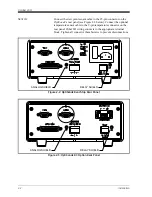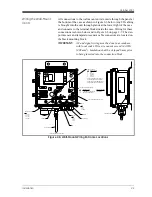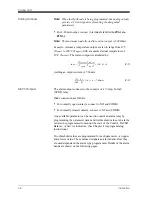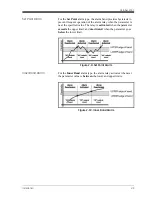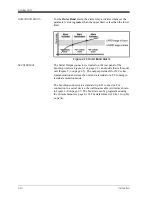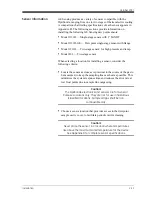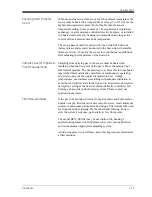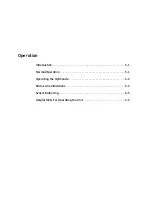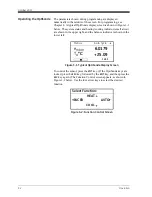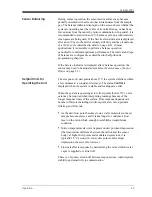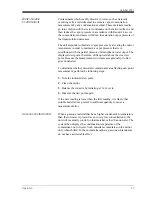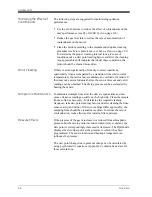
Installation
2-13
October 2007
Ensuring Heat Transfer
(cont.)
When measuring dew points at or above the ambient temperature, the
sensor must be heated to a temperature of at least 5 to 10°C above the
highest anticipated dew point (but not higher than the sensor
temperature rating). Some sensors can be mounted on a liquid heat
exchanger, or a temperature-controlled electric hot plate, or installed
in a heated enclosure. GE Sensing recommends closed-loop active
control of the elevated sensor body temperature.
The sensor base should be coated with zinc-oxide-filled silicone
thermal grease and securely anchored to the heat sink with suitable
fasteners. Allow ½ hour for the sensor to reach thermal equilibrium
after adjusting the temperature of the heat sink.
Sample Lines for High Dew
Point Measurements
Sampling lines carrying gas to the sensor must be heated and
insulated when the dew point of the gas is above the sample line’s
ambient temperature. The simplest way to achieve this is to use heater
tape (either thermostatically controlled, or continuously operating,
and sized to provide the required temperature rise). At high
temperatures, use stainless steel tubing with adequate insulation to
avoid hot and cold sections in the line and to avoid water absorption/
desorption cycling as the heater is thermostatically controlled. GE
Sensing can provide custom heated systems. Please contact our
application engineers.
Filter Requirements
If the gas to be monitored is free from particulates and hydrocarbon
liquids or vapor, filtering is not necessary. However, most sample gas
streams contain some particulates, and using a filter reduces the need
for frequent mirror cleaning. On the other hand, filtering tends to
slow the system’s response, particularly at low frost points.
The model BF12-SS filter may be used inline; GE Sensing’s
application engineers would be pleased to review your application
and recommend an appropriate sampling system.
Avoid using glass wool, cellulose, and other hygroscopic materials as
a filter medium.
Summary of Contents for 1111H
Page 1: ...GE Sensing OptiSonde General Eastern Chilled Mirror Hygrometer User s Manual ...
Page 9: ...Chapter 1 ...
Page 15: ...Chapter 2 ...
Page 33: ...Chapter 3 ...
Page 43: ...Chapter 4 ...
Page 57: ...Chapter 5 ...
Page 68: ...Appendix A ...
Page 73: ...Appendix B ...
Page 74: ...Humidity Equations and Conversion Chart Introduction B 1 Vapor Pressure B 1 Humidity B 2 ...
Page 78: ...Appendix C ...
Page 79: ...Configuring the Serial Interface Wiring to a Personal Computer C 1 ...
Page 82: ...Appendix D ...
Page 87: ...Appendix E ...
Page 88: ...Theory of Operation and Glossary Theory of Operation E 1 The PACER Cycle E 4 Glossary E 5 ...




